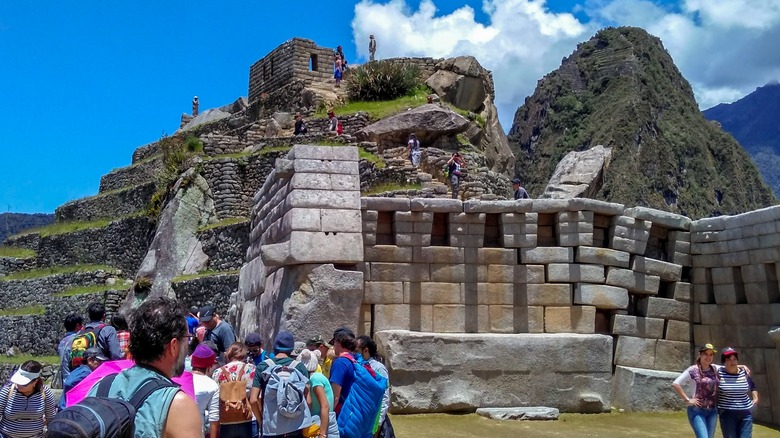Tourist Attractions Ruined by Overtourism
Tourism, while a significant contributor to global economies and cultural exchange, can have devastating consequences when not managed sustainably. Overtourism characterized by excessive visitor numbers that strain local infrastructure, harm natural environments, and disrupt communities has led to the deterioration of many beloved destinations. This phenomenon has sparked urgent conversations about the balance between preservation and exploration. 
Below, we explore several iconic destinations where overtourism has had adverse effects and consider the lessons they provide.
The Erosion of Natural Wonders
Some of the world’s most awe-inspiring natural landscapes have suffered severe degradation due to uncontrolled visitor numbers.
- Maya Bay, Thailand
Once celebrated as a tropical paradise, Maya Bay on the island of Ko Phi Phi Leh gained international fame after being featured in The Beach. The subsequent surge in tourism overwhelmed the delicate marine ecosystem, leading to coral reef destruction and water pollution. In response, authorities closed the bay for several years to allow recovery, highlighting the fragility of such natural wonders.
- Mount Everest, Nepal
Mount Everest, a dream destination for mountaineers, now grapples with severe overcrowding and environmental degradation. Thousands of climbers annually leave behind trash, human waste, and abandoned equipment, turning the sacred peak into a dumping ground. Efforts to regulate climbing permits and organize clean-up missions have started, but the challenges persist.
Cultural Heritage Under Siege
Overtourism has also taken a toll on historical and cultural landmarks, eroding the charm and integrity that made them famous.
- Venice, Italy
Venice is a prime example of a city overwhelmed by its popularity. The influx of cruise ships and day-trippers has caused significant strain on its infrastructure, with rising water levels and damage to ancient architecture becoming increasingly common. To mitigate the impact, the city has implemented measures such as entrance fees and restrictions on large ships.
- Machu Picchu, Peru
This Incan marvel, perched high in the Andes, attracts millions of visitors annually. However, the foot traffic has caused significant wear to its ancient stone pathways, and the nearby town of Aguas Calientes has struggled to cope with the tourism surge. The Peruvian government now limits daily visitor numbers and enforces stricter rules to protect this UNESCO World Heritage Site.
Urban Destinations Facing Saturation
Cities known for their vibrant cultures and iconic landmarks are feeling the effects of overcrowding, with locals often bearing the brunt of the challenges.
- Barcelona, Spain
Once a hub of creativity and art, Barcelona now struggles with its popularity. The influx of tourists has led to rising housing costs, pushing locals out of their neighborhoods. Streets are often overcrowded, and landmarks like Park Güell have implemented timed tickets to manage the crowds.
- Reykjavik, Iceland
Iceland’s booming tourism industry, driven by its breathtaking landscapes and unique culture, has overwhelmed Reykjavik and other small towns. The country's infrastructure has struggled to keep pace, leading to environmental and societal concerns. Efforts are now being made to promote sustainable tourism practices across the nation.
Wildlife and Ecosystems Under Pressure
Natural habitats and wildlife are increasingly endangered as tourist numbers climb, often disrupting delicate ecological balances.
- Galápagos Islands, Ecuador
The Galápagos Islands, famed for their unique biodiversity, have become a victim of their success. The rising number of visitors has put pressure on the fragile ecosystems, threatening the survival of endemic species. The Ecuadorian government has introduced strict regulations, including limiting visitor numbers and restricting areas open to tourism.
- The Great Barrier Reef, Australia
One of the world’s most famous marine ecosystems, the Great Barrier Reef has suffered from overtourism and environmental factors like climate change. Boat traffic, snorkeling, and diving activities have exacerbated coral bleaching and habitat destruction. Sustainable tourism practices and conservation efforts are crucial to ensuring the reef’s survival.
Mitigating the Impacts of Overtourism
To preserve these treasures for future generations, sustainable tourism must be prioritized.
Strategies include:
- Implementing visitor caps to control foot traffic.
- Promoting off-season travel to reduce peak-time pressures.
- Educating tourists on responsible behavior and cultural sensitivity.
- Investing in local infrastructure to support sustainable tourism growth.
- Encouraging governments to enforce regulations protecting cultural and natural sites.
These approaches can help balance the need for tourism with the imperative to protect the destinations that inspire travelers worldwide.
Conclusion
The consequences of overtourism underscore the importance of responsible travel. Destinations that have faced deterioration serve as a wake-up call for the global community to reevaluate how we interact with the world’s most cherished sites. By fostering a culture of sustainability, we can ensure that these wonders continue to inspire awe and admiration for generations to come.
References
- Maya Bay Rehabilitation
- Mount Everest Environmental Challenges
- Venice Overtourism Measures
- Machu Picchu Visitor Limits
- Barcelona Housing Crisis
- Reykjavik Tourism Sustainability
- Galápagos Islands Conservation
- Great Barrier Reef Restoration
- Sustainable Tourism Practices
- World Heritage Site Protection Efforts
































